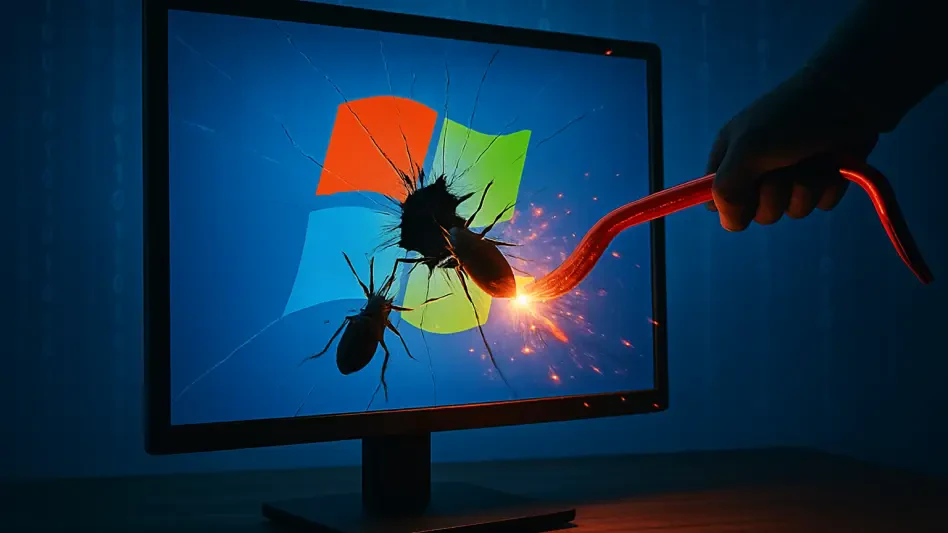As the manufacturing industry continues its digital evolution, the importance of a robust cybersecurity framework has become increasingly evident. In a sector historically focused on physical processes and capabilities, the integration of digital technologies has opened up new avenues for efficiency and innovation. However, alongside these opportunities come significant risks primarily associated with cyber threats. This reality has propelled cybersecurity to the forefront of strategic discussions within manufacturing enterprises globally, emphasizing the need for a cohesive approach that marries safety, strategy, and innovation.
The Strategic Imperative of Cybersecurity in Manufacturing
Integration of Cybersecurity and Operational Safety
Manufacturing companies are redefining their approach to operational safety by integrating cybersecurity at every level. In today’s technology-driven environment, ensuring the safety and integrity of digital assets is just as crucial as maintaining physical infrastructure. Cybersecurity is no longer solely an IT department’s prerogative but has evolved into a pivotal element of overall risk management strategies. Industry leaders have recognized that these digital vulnerabilities can disrupt operations as severely as physical threats, necessitating comprehensive protection measures. This recognition has spurred a cultural shift, urging companies to consider both cybersecurity and process safety as interdependent factors vital to maintaining operational continuity.
Moreover, the intersection of cybersecurity with process safety is setting new standards for how companies manage industrial risks. The outdated notion of addressing cybersecurity as a standalone factor is gradually being replaced by an integrated framework. Such an approach not only mitigates risks but also enhances operational resilience by aligning cybersecurity measures with existing safety protocols. Organizations increasingly see the benefits of this integrated model, which not only protects assets but also optimizes overall safety performance, making cybersecurity an indispensable component of modern manufacturing operations.
Cultural Transformation and Behavioral Adaptation
A critical dimension in advancing manufacturing cybersecurity strategies is cultural transformation, which hinges on effectively merging cybersecurity awareness with organizational culture. In this endeavor, the human element emerges as a pivotal factor. Employees on the plant floor often serve as the first line of defense against cyber threats, necessitating an alignment of cybersecurity practices with their daily operational routines. This alignment fosters a culture where cybersecurity becomes second nature rather than an afterthought, thus reducing vulnerabilities stemming from human error.
Building trust and collaboration among stakeholders is equally vital in this cultural shift. The integration of cybersecurity into daily operations requires cooperation across all levels of the organization. It involves not only adopting new technologies but also adapting mindsets. Training and awareness programs play an essential role in this evolution, empowering employees with the knowledge and skills to identify and respond to potential threats. This cultural evolution within organizations is reshaping how cybersecurity is perceived, not as a hindrance but as an enabler of innovation and competitive advantage.
Governance Frameworks and Organizational Alignment
The Role of Governance Frameworks
Governance frameworks such as ISO 27001, IEC 62443, and NIST Cybersecurity Framework (CSF) are increasingly regarded as essential components for structuring robust cybersecurity programs within the manufacturing sector. These frameworks provide a structured approach to managing cybersecurity risks in ways that are aligned with broader business objectives. By offering standardized guidelines and practices, they enable manufacturing companies to systematically assess, manage, and mitigate cybersecurity threats, thereby ensuring that contingency measures are both effective and efficient.
The adoption of these frameworks requires a cross-functional approach involving stakeholders from various parts of the organization. This collaborative effort fosters a shared understanding of cybersecurity objectives and aligns them with business goals. Executive sponsorship is particularly critical, as it ensures that cybersecurity initiatives receive the necessary resources and support. As these frameworks become more embedded in organizational practices, they serve as a strategic tool not only for protection but also for innovation, enabling businesses to navigate the complexities of digital transformation with confidence.
Agility and Effective Prioritization
Given the financial and operational constraints typical to many manufacturing environments, an agile approach to implementing cybersecurity measures can offer significant advantages. Starting with targeted, impactful projects allows companies to achieve “quick wins,” demonstrating the value and effectiveness of cybersecurity initiatives early on. This approach involves identifying critical vulnerabilities, assessing risk exposures, and prioritizing resources to address the most pressing issues. Agile methodologies enable companies to adapt swiftly to changing threat landscapes, ensuring that cybersecurity strategies remain relevant and effective over time.
The emphasis on agility within cybersecurity programs encourages iterative improvements rather than seeking a fixed end state. By breaking down larger goals into manageable tasks, organizations can allocate resources more efficiently and make meaningful progress without overwhelming their capacities. This iterative process builds momentum, gradually strengthening the overall security posture while minimizing disruptions to ongoing operational activities. Through this strategic approach, manufacturing companies can effectively balance security imperatives with operational demands, paving the way for sustained growth and innovation.
Addressing Evolving Threats and Compliance Challenges
Intelligence-Driven Strategies for Emerging Threats
Manufacturers face an increasing array of threats in the digital age, from state-sponsored cyberattacks to hacktivism and ransomware. Rapid technological advancements have created an environment where traditional cybersecurity measures may no longer suffice. To combat these evolving threats, companies must adopt intelligence-driven strategies that focus on proactive risk management and threat detection. This approach involves continuous monitoring of threat landscapes, leveraging data analytics to identify potential vulnerabilities, and deploying resources to neutralize risks before they materialize.
By integrating intelligence-gathering practices into their cybersecurity frameworks, manufacturers can enhance their ability to respond swiftly and effectively to complex cyber threats. This strategic use of intelligence not only protects digital assets and physical operations but also helps companies gain a competitive edge. By staying ahead of threat actors, manufacturers can minimize disruptions, safeguard their reputation, and maintain operational continuity. As the industry evolves, intelligence-driven cybersecurity strategies will be critical in managing both present and future challenges.
Navigating Complex Regulatory Landscapes
As cyber threats increase in sophistication and frequency, the landscape of regulatory compliance is growing increasingly complex. Adhering to new directives, such as the European Union’s NIS2 Directive, presents a significant challenge for manufacturers striving to meet evolving standards. Compliance requires a continuous commitment to maintaining secure and resilient operations, as well as a proactive approach to risk management. It is no longer sufficient to pass periodic audits; organizations must demonstrate ongoing resilience and preparedness at all levels of operation.
Meeting these regulatory demands involves implementing comprehensive compliance programs that account for industry-specific requirements. This ensures that all aspects of the manufacturing process are secure, from supply chains to final product delivery. Integration of continuous compliance systems not only mitigates risks associated with legal non-compliance but also strengthens overall security posture. As regulations become increasingly stringent, manufacturers must remain vigilant and adaptable, ensuring that their cybersecurity strategies are consistently aligned with the latest legal and industry standards.
Harnessing Artificial Intelligence and Bridging the Talent Gap
Artificial Intelligence as Both an Asset and a Risk
Artificial intelligence (AI) has emerged as a double-edged sword in the field of cybersecurity, offering both vast potential and significant challenges. On one hand, AI-enhanced systems enable more precise threat detection and faster response times, providing organizations with powerful tools to address emerging threats. AI technologies can analyze vast amounts of data in real-time, identifying patterns and anomalies that indicate potential security breaches. This predictive capability enhances cybersecurity defenses, allowing manufacturers to prevent incidents before they occur.
Conversely, the rise of AI introduces new vulnerabilities that adversaries can exploit. Cybercriminals can use AI to devise more sophisticated attacks or manipulate existing AI systems to create unforeseen threats. To mitigate these risks, the deployment of AI in cybersecurity must be accompanied by rigorous oversight and transparency. Human oversight is critical to ensuring that AI applications align with organizational values and ethical standards. In balancing its benefits with potential risks, AI can be a formidable ally in the cybersecurity arsenal, provided it is used responsibly and strategically.
Strengthening the Cybersecurity Workforce
A critical challenge facing the manufacturing sector is the shortage of skilled professionals equipped with both operational technology (OT) and cybersecurity expertise. As manufacturing processes become increasingly digital, the demand for personnel well-versed in both domains grows. Bridging this talent gap requires strategic investments in workforce development, including comprehensive training programs and apprenticeships. These initiatives should focus on equipping employees with the foundational knowledge and skills necessary to support cybersecurity operations within manufacturing settings.
Addressing the talent shortage also involves fostering partnerships with educational institutions and industry organizations. Collaborative programs can help prepare the next generation of cybersecurity professionals, ensuring that the skill set aligns with current industry needs. Companies must also invest in continuous professional development, encouraging existing employees to upskill and stay abreast of emerging technologies. By addressing the talent gap, manufacturers can build a diverse and resilient workforce capable of designing and implementing effective cybersecurity measures in their operations.
The Future of Cybersecurity in Manufacturing
Dynamic Security Programs as a Strategic Imperative
The rapidly changing threat landscape necessitates that manufacturing cybersecurity strategies evolve from static frameworks to dynamic, adaptive programs. These living strategies are designed to remain flexible, accommodating new threats and technological advancements while being seamlessly integrated with operational processes. This transformation requires a holistic approach, incorporating input from leadership, IT, and operational staff to create a cohesive strategy aligned with organizational goals. Businesses need to foster an environment where cybersecurity is ingrained into the fabric of day-to-day activities, enabling them to anticipate and adapt to future risks.
Dynamic cybersecurity programs position manufacturing companies to remain resilient in the face of uncertainty, balancing innovation with security imperatives. By emphasizing a proactive approach, these programs encourage organizations to continuously evaluate and update their security measures, leveraging cutting-edge technologies and methodologies. As cybersecurity emerges as a strategic pillar of manufacturing enterprises, these adaptable and forward-thinking programs will become essential in maintaining operational excellence and competitive advantages in the industry.
Towards a Collaborative Cyber Ecosystem
To enhance cybersecurity outcomes, manufacturing companies must engage in collaborative efforts that transcend organizational boundaries. Partnerships with technology providers, industry associations, and regulatory bodies can facilitate the exchange of best practices, insights, and intelligence necessary to combat sophisticated cyber threats. Collaborative ecosystems foster collective resilience by enabling stakeholders to pool resources, share expertise, and develop industry-wide cybersecurity standards.
Creating these ecosystems requires an open dialogue that encourages transparency and trust, forming the basis for effective collaboration. By proactively engaging with partners and stakeholders, manufacturers can gain access to emerging technologies and innovative security solutions. Such partnerships can also enhance threat intelligence capabilities, providing timely and actionable insights into potential risks. As the manufacturing industry grapples with an increasingly complex digital landscape, collaboration will be vital in fostering holistic cybersecurity strategies that ensure the industry’s continued growth and success.
Reflecting on Progress and Charting a Path Forward
As the manufacturing industry undergoes a significant digital transformation, the critical role of cybersecurity has become increasingly apparent. Traditionally, this sector concentrated on physical processes and attributes, but the adoption of digital technologies has unveiled novel paths for enhanced efficiency and innovation. Nevertheless, these advancements also bring considerable challenges, primarily centered around cyber threats that could compromise operations. Consequently, cybersecurity has emerged as a pivotal element in strategic conversations among manufacturing firms worldwide.
In this context, recognizing the essentiality of a strong cybersecurity framework is crucial. It serves as a protective shield against potential cyber risks that could affect operations. This growing awareness has intensified the call for a unified approach that seamlessly blends safety, strategic planning, and continued innovation. By balancing these aspects, manufacturers can not only protect their digital assets but also harness technology to drive progress and competitiveness. Crafting this balance ensures that companies can maintain resilience, safeguarding both their current operations and future growth prospects.








